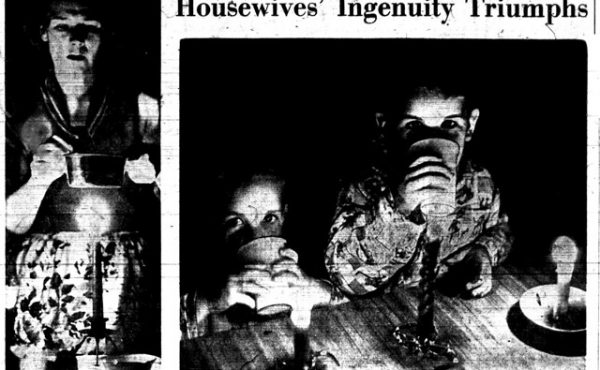 EDITOR: This is the second installment in our series following the Fort York archeological dig of the Government House site. Click here for more background and previous posts on the dig.
EDITOR: This is the second installment in our series following the Fort York archeological dig of the Government House site. Click here for more background and previous posts on the dig.
![]()
On April 27, 1813, in a desperate act to flee from the advancing American army, the British troops defending York blew up part of their own fort, the grand magazine. The explosion was so huge reports say it was seen and heard from as far away as the mouth of the Niagara River. Like all military garrisons of the time, Fort York had a storehouse of gunpowder and small arms just outside its walls. When it was clear the American troops were gaining, the British commander, Sir Roger Sheaffe, ordered this storehouse — the grand magazine — blown up. This successfully prevented the weapons stored there from falling into American hands and created a distraction while British soldiers retreated east along Front Street to the Town of York. And quite the distraction it was – the explosion killed 38 soldiers, including General Pike, and left another 224 wounded, many of whom died soon after. Surprising as the tactic was, it didn’t win the battle and the American army, which far out numbered the British and Native army, proceeded to loot the town of York for close to a week.
Fast forward almost two hundred years to a sunny late-June morning and Fort York is busy with archaeologists searching for the remains of the crater left behind from the explosion. While the main excavation for the remains of the Government House continued inside the walls of the fort, on the lake side of the wall a second team began searching for the remnants of a crater estimated to be 20m in diameter. What exactly would the remains of a hole look like you ask? “It’s difficult to say but most likely we’re looking for rubble dating from the mid 19th century that would have been used to fill the crater, perhaps even rubble from the Lieutenant Governor’s House” explained Ron Williamson the chief archaeologist on the project. Regardless of where the fill came from it would definitely be a noticeable hiccup in the soil profile.
The crater has been a topic of conversation amongst archaeologists and Fort York aficionados for years, yet this is the first excavation aimed at finding it. The dig was short: only Monday to Wednesday of last week, and part of the bicentennial documentary being made by YAP Films to commemorate the war. To determine the location for the excavation the crew examined plenty of archival maps, paintings, and sketches (such as the map of Fort York from 1816 included below) to best guess where the crater once was. Unfortunately, no definite reference now exists and today’s landscape makes things much more difficult – the shoreline has changed drastically and, with the construction of the railways and the Gardiner Expressway, the area south of Fort York has become heavily landscaped and industrial.

On Wednesday, during my visit to the site, I followed Ron Williamson as he explained their surprising findings. Rather than finding the remains of the grand magazine explosion the team found part of the remains of the original rampart of the Fort. A thick line of black soil illustrated the surface of earthworks, the original defensive wall of the fort, a gradual slope on the lakeside designed to give the defenders a wide field of fire and steep slope, on the inside a to give the fort’s soldiers protection. Even more impressively, the wood mats that acted like modern geotextile to hold up the rampart are still intact. The archaeologists also found signs of the original soil profile – dark silty blue soil of the lakebed in contrast with the yellow clay soil of the shoreline.
Although the dig set out in search of something much different, the crew of ASI archaeologists are, as any Fort York historian would be, excited by these unexpected finds. Being able to locate the southern rampart will be valuable in interpreting archival maps of the Fort and understanding defensive strategies. As for the crater left by the explosion of the grand magazine, a memorial maple tree stands just inside the fort wall and perhaps one day it will be known how well it was placed.


